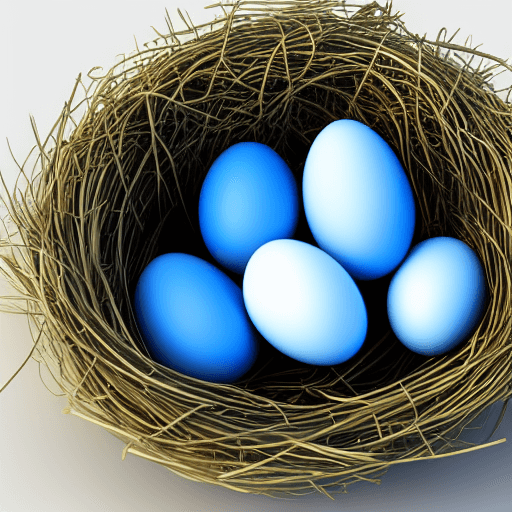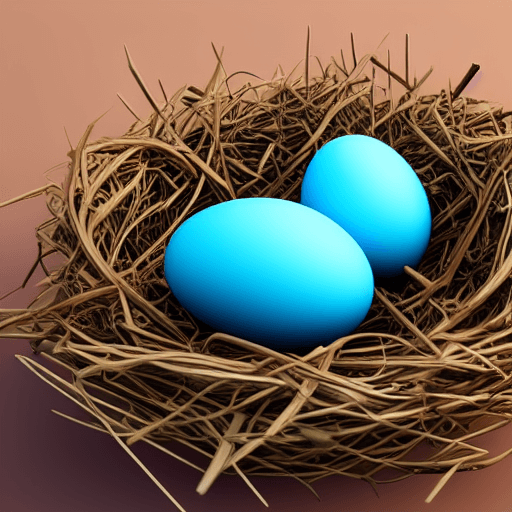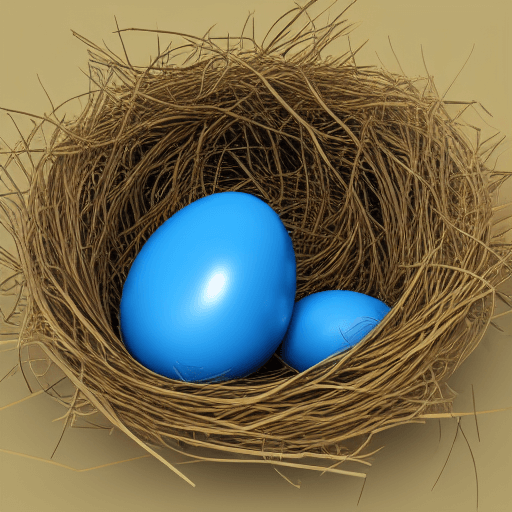Do you know what bird lays blue eggs?
And no, this is not a Dr. Seauss rhyme.
If you don’t know, don’t worry!
But, it is true. There are birds that lay blue eggs, Sam-I-Am.
So, let’s discuss the different birds that lay blue eggs. We’ll also review some interesting facts about these birds.
So what bird lays blue eggs? Drum roll, please…

The bird that lays blue eggs is the Eastern Bluebird.
Explain It To A Child
There are several birds that lay blue eggs, but the Eastern Bluebird is one of the most well-known. These beautiful birds are a bright blue color all over, with a reddish chest and white belly.
The Eastern Bluebird is a small North American bird that typically lays three or four blue eggs. The eggs are usually laid in a nest made of twigs and lined with grass, which the female builds herself. The male helps to incubate the eggs and feed the chicks once they hatch.
What bird lays blue eggs?
There are several birds that lay blue eggs, but the Eastern Bluebird is perhaps the best known.
These striking birds are a vibrant blue all over, with a reddish breast and white belly.
Eastern Bluebirds are found in open woodlands and forests across the eastern United States, where they build cup-shaped nests in tree cavities or nest boxes.
As their name suggests, Eastern Bluebirds lay blue eggs, which are incubated for about two weeks.
The young birds fledge about three weeks after hatching and quickly learn to fend for themselves.
Eastern Bluebirds are a beloved bird species, and their bright blue eggs add a splash of color to any nest.
How can a bird make blue eggs?

While most birds lay white or brown eggs, bluebirds lay blue eggs.
One theory for why this is the case is that the color helps to camouflage the eggs from predators.
Another theory is that the blue pigment helps to absorb heat from the sun, keeping the eggs warm during incubation. Whatever the reason, bluebird eggs are truly a sight to behold.
Why do some birds lay blue eggs?

One of the most conspicuous features of a bird’s egg is its color. While many bird species lay eggs that are some shade of white, others boast a much more colorful palette.
One of the most unusual egg colors is blue. While the cause of this strange hue has long baffled scientists, recent research has shed some light on the matter. It turns out that the blue pigment found in bluebird eggs is actually a form of camouflage.
The color helps to conceal the eggs from predators, as they blend in with the sky. In fact, it has been shown that bluebird eggs laid in nests that are visible from below are much more likely to be eaten than those that are not.
As a result, the blue pigment provides an important defense for these vulnerable eggs.
What other birds lay blue eggs?

Blue eggs are relatively rare in the bird world, with most species laying brown or white eggs.
However, there are a few other birds that lay blue eggs, including the American robin, the eastern bluebird, and the common brimstone butterfly.
The blue hue of these eggs is created by a layer of pigmented cells called chromatophores, which helps to camouflage the eggs against predators.
- Interestingly, bluebirds will sometimes reuse an old nest, and the new eggs will often have a different color than the original eggs.
- This is because the blue pigment fades over time, so new eggs laid in an old nest will appear paler.
- Regardless of their color, all bluebird eggs have one thing in common: they hatch into beautiful bluebirds that bring a splash of color to any garden.
Thus, eastern bluebirds are one kind of bird that lay blue eggs.
Where do bluebirds nest?
Bluebirds are a welcome sight in any backyard, with their bright plumage and cheerful song.
While they will occasionally build their nests in trees, bluebirds prefer to nest in man-made structures such as birdhouses.
- When choosing a nesting site, bluebirds will look for a location that is safe from predators and provides good access to food.
- They will also avoid sites that are too close to human activity, as this can increase the risk of disturbance.
- Once a suitable location has been found, the female bluebird will build a nest out of grass, leaves, and twigs.
- She will then lay between three and seven eggs, which hatch after about two weeks.
The young birds will stay in the nest for another three weeks before fledging, at which point they will begin to explore the world on their own.
Article Sources
Jacks of Science sources the most authoritative, trustworthy, and highly recognized institutions for our article research. Learn more about our Editorial Teams process and diligence in verifying the accuracy of every article we publish.
